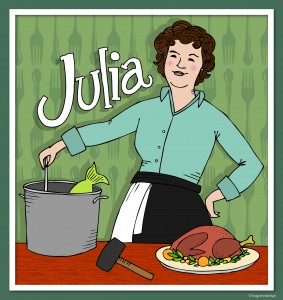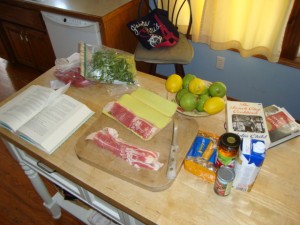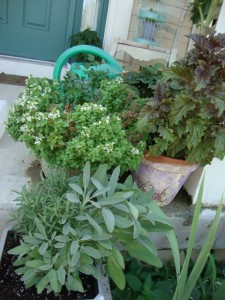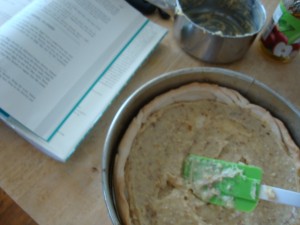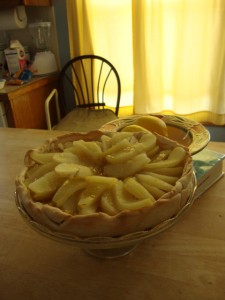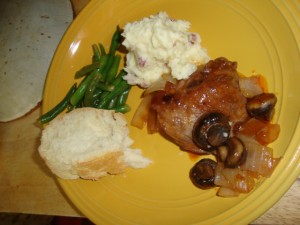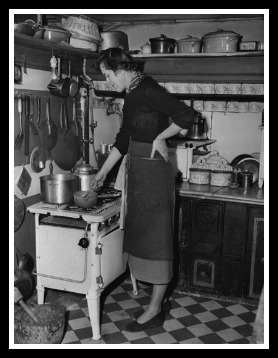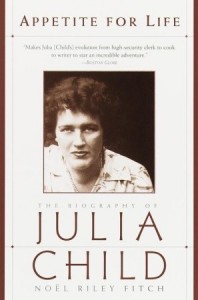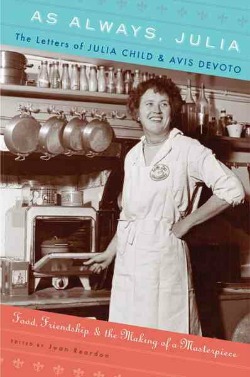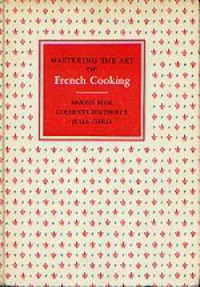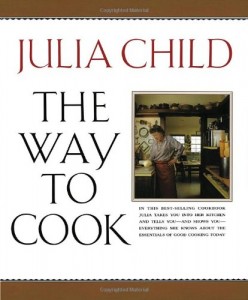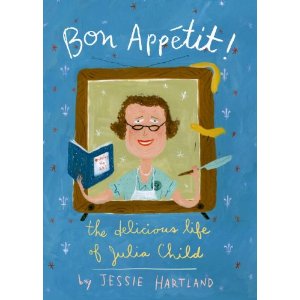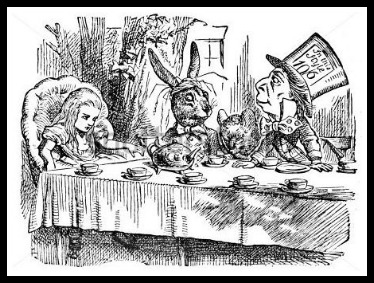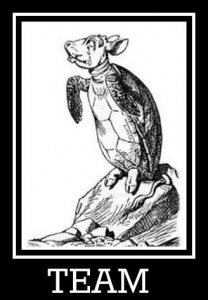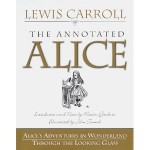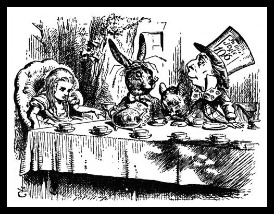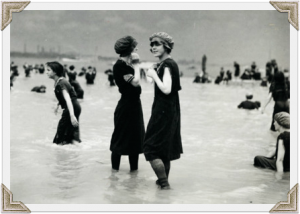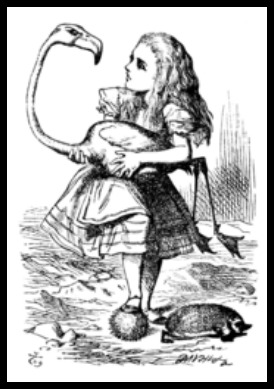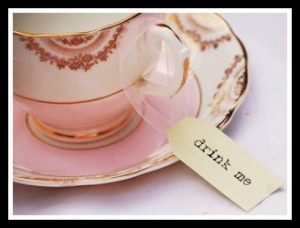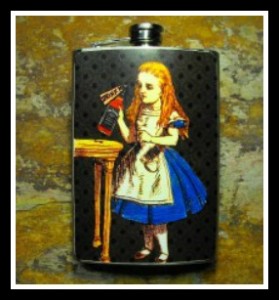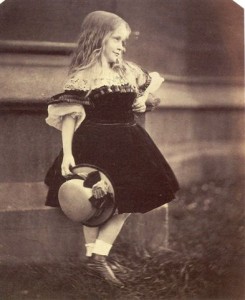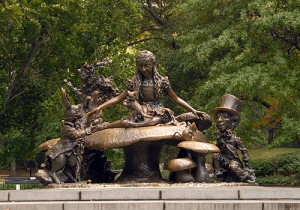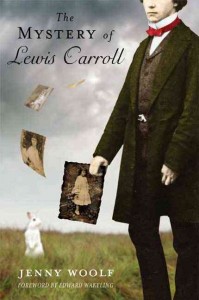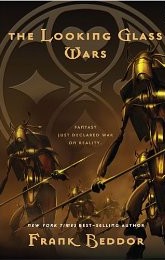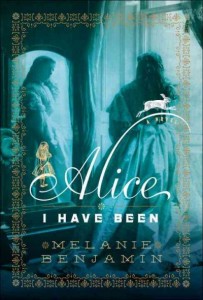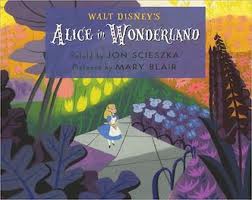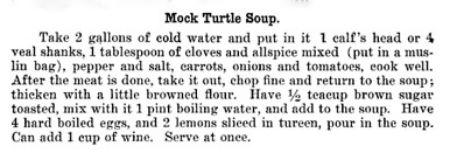Special Feature: Susan’s Dinner Adventure with Julia Child
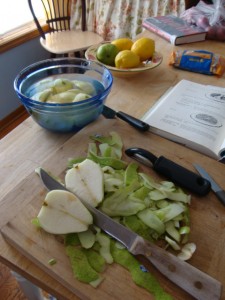
Peeling, coring and slicing the pears that were then poached for far longer than Julia had said they would need to be.
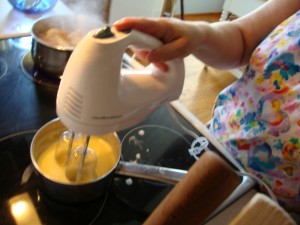
While the pears poached, I beat the custard as it cooked. You thought I would beat by hand? hahahahahno.
Episode 29: Julia Child
Julia Child- the iconic and effervescent television personality who brought french cooking to servantless American homes. On television she boldly demonstrated the ease of preparing the foods that she loved. People have been learning to cook with her since her first cookbook was published in 1961, and her television show, The French Chef hit the airwaves a couple of years later.
This is how we think of Julia: stirring and whisking and slicing her way through France. But she was mid life when all of that began- in this episode we talk about her life before she became the face of French cooking in American homes. We chat about her upbringing in Pasadena, CA, her education at Smith College, her early career as a well traveled file clerk, and the romance with Paul Child that really changed her life.
August 15, 2012 would have been Julia’s 100th birthday, and in celebration we sat down to talk about her life, her loves, her adventures, her politics and her food.

Born Julia Carolyn McWilliams in 1912, she grew up in an affluent home, attended private schools and had, what she described as a, "butterfly life."
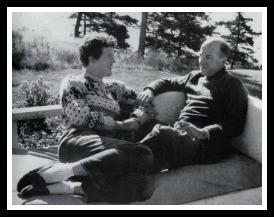
While serving in the OSS during World War II, Julia met Paul Child. They married and she moved with him to France where he was stationed as a diplomat.

The apartment building in Paris where the couple lived is sort of a foodies mecca even today. People make a point to stand in the doorway of this famed address to have their picture taken.
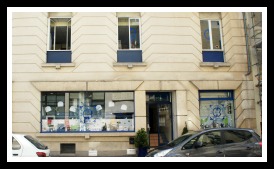
While in France, Julia fell in love with the country and the food. She attended and graduated from the famed Le Cordon Bleu cooking school. (As it looks today)
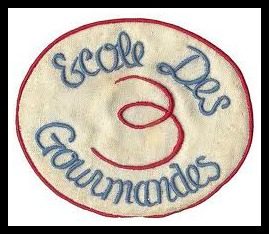
After graduation, Julia teamed up with two French friends and began L'Ecole des Trois Gourmandes,( 'The three hearty eaters"), and taught private cooking lessons to American women in Paris. The two asked Julia to consult on a cookbook that they were writing. The next nine years of her life was devoted to writing that book: Mastering the Art of French Cooking.

Julia and Paul supported one another both in Europe and America as they were faced with challenges and successes in their lives.
Time Travel With The History Chicks
Our stack of Julia books was rather impressive, and we liked several of them:
This is the one that we would recommend if you want to read just one book about her life. Her voice will be in your head by the end of the first chapter.
My life in France, by Julia Child and Alex Prud’homme. 
Another complete biography of her life that we can recommend:
We can’t recommend this one, simply because we didn’t read it (yet). But if you did, drop us a line and let us know what you think.
If you like reading letters, and like peeking into conversations of women (and you know you do), this one is interesting:
The two children’s books that we thought were very charming:
Julia’s 100th birthday celebration– ooh,nobody throws a party like the internet!
Archive of American Television Three hour interview, very interesting if you want to hear about her life from Julia herself.
Interview in Coping Magazine about Julia’s experiences with breast cancer in 1965.
Movies…well, there is this one (Also a book, and formerly a blog):
The grant giving organization that Julia founded to help her legacy and passion live on through others, The Julia Child Foundation. This site has lots of pictures information and a really interesting timeline that is great for kids.
But if you want a seriously fun website about Julia, go to the kitchen! Her kitchen is preserved at the Smithsonian in, but we can tour it from our living rooms.
Beckett recommended the webcam at Boulangerie Bonneau in Paris : http://www.bonneau.fr/live/ (they don’t make bread on Mondays and Tuesdays)
Finally, if you enchanted by the Lisa Graves illustration of Julia that was created for us, (posted at beginning of this shownote) you really should check out her website: History Witch. Her short and funny highlights of historical women as well as her whimsical illustrations may charm you like they did us.
As always, music comes courtesy of Music Alley. Visit them at Music.mevio.com
Episode 23A: Beckett and Susan’s Adventures in Wonderland and What They Found There
This minicast deals solely with the books: Alice’s Adventures in Wonderland and Through the Looking Glass and What Alice Found There, both by Lewis Carroll with illustrations by John Tenniel. We take a chapter-by-chapter look at the two books, talking plot points, characters, and behind-the-story tales.
The first book carries a playing card based theme, and the latter evolves around a game of chess. But these are only the surface references within these stories, the many elements that make them up are far too numerous to be contained within even an hour long podcast. The study of them is a major undertaking. We admit it- we are not Carrollian scholars, but we do know some stuff.
For instance, some of the references in the books are only understood if you are aware of the era in which the books were written. Some only if you are knowledgeable in the eccentricities of Oxford, England. And some only if you belonged to, or knew details of, the Dodgson or Liddell families. Even more exciting, Lewis Carroll tucked so many mathematical terms, riddles and word play into the two books seeking them out would be a fantastical hobby in and of itself.
For this minicast we go chapter by chapter and discuss not only the storyline, but some references within it. We talk about some of the characters in the book as well as some of the poem satires and forgotten characters.
And we might sing a little teeny tiny bit, too.
Please give a listen for more details. If you are interested in learning even more “special features” about these two works, we suggest that you begin with The Annotated Alice by Martin Gardner (with the original Alice illustrations by John Tenniel).
If you would like to see a really creative illustration collaboration with the original text, Alice’s Illustrated Adventure is a really fun blog. The tag line: “Written by Lewis Carroll and illustrated by Almost Everbody” sums it up.
Both books are available in audiobook form, free of charge, in ITunes. Simply search for the Librivox name with the title you would like. There are unabridged and abridged versions of them both.
But, be warned, that may be only the beginning of the adventure for you!!
Summertime News!
Friends,
Alice taught us something! All the women we talk about do, but some of the lessons that we learned from Alice have to do with you.
We recorded Alice just as summer vacation began for our children. And it was challenging. Time to work on the podcasts, which we thought was precious before, became even more valuable because it became more rare. Then we encountered a technical issue with the second part of Alice in Wonderland- the chapter-by-chapter discussion of the books. We hope to have that resolved in the next couple of weeks. Add in vacations with our families, ongoing work responsibilities and commitments in other areas- our lives were as wild and nerve-wracking as falling down a rabbit hole, a mad teaparty and swimming in a pool of tears combined.
We had to cut back on something.
This is what we have decided to do: For the remainder of the summer- July and August- we will only be posting one full episode a month. We aren’t able to tell you the exact date right now, but summer is sort of about being spontaneous and enjoying the ride so that’s what we are going to do. We will make sure that we let you know when the next episode is ready.
That will bring us to the end of Season Three. We will not be taking between-season hiatus as we have in the past, and Season Four will begin as fall does, sometime in September.
Beckett and Susan
Episode 28: Alice in Wonderland
Once a season we step back from the factual historical world into the fictional historical world. This season, while stepping back, we fell into a rabbit hole of sorts and found ourselves becoming curiouser and curiouser about Alice. Alice in Wonderland, that is.
This episode is all about Alice. Who was she, how did these books about her come to be and who is her creator, Charles Lutwidge Dodson (more commonly known as Lewis Carroll)? What is it about this story that has allowed it to endure for 150 years? Is it the charm or is it the mystique that surrounds not only the tale, but the life of the writer?
Originally written for a child, this fantasy deals with some very dark images and has generated some wholly grown-up interpretations.Yet, it has been adored by children and adults alike. Alice’s Adventures in Wonderland and Through the Looking Glass and What Alice Saw There have been in continuous publication since they were first published in the late 1800’s.
We discuss the storylines of these two books in our companion mini-cast, Beckett and Susan’s Adventures in Wonderland and What They Saw There. If you are not familiar with the story, or need a refresher, please give a listen to that podcast first. Some of the details of this episode are better understood within the context of those stories.
On July 4th, 1862 Charles Dodgson, a friend and three young Liddell sisters- Lorina, Edith and 10 year-old Alice- took a rowing trip up a river. As was tradition for this group, Charles began to tell stories. One in particular enchanted young Alice who asked if he could write it down for her. He did, and presented her with a hand written and self-illustrated Alice’s Adventures Under Ground some time later. With further editing, reworking and creating, Charles published the tale (with illustrations by John Tenniel) as Alice’s Adventures in Wonderland three years after that boating trip.
Who was Charles Dodgson? He was the third of eleven children, although the first male in his family. His father, Charles, was a clergyman and mother, Francis Jane, raised the large and close upper- middle class family in Cheshire, England. Young Charles was gifted academically and excelled in school (although he had a stint in a rather notorious institution that may not have been the cheeriest of times). When it came time for Charles to decide on a career path he became a mathematics lecturer at Oxford.( Maybe not the most obvious choice for a man with a stammer). He was quite religious, and an ordained deacon- although he never entered the priesthood as his employer would have required. He was also a writer, penning magazine articles and poems under the name Lewis Carroll, and a very accomplished amateur photographer .
The mystique of Lewis Carroll that endures is probably based on the loss of some key diary entries after his death, and what is known was often left to very loose interpretation. We knock out some of the myths and common misconceptions during the podcast including:
Did he stammer only around adults? (No, he stammered when speaking with children as well, they may have been more understanding, however.)
Was he shy? (No, he was very social and had a wide circle of friends.)
Was he a pedophile? (No, probably not. When the social context of the times, as well as the trends in photography are taken into consideration evidence seems to point to no.)
We cover quite a bit more in the podcast, but the one that pertains the most to this topic? Who WAS Alice and who was she to him?
Alice Liddell was the forth of ten children of Henry and Lorina Liddell (rhymes with ‘riddle’). Henry was the Dean of Oxford during a large chunk of Charles’ time there, and his boss. Charles was a good family friend, spending time with the whole family, not just Alice. He photographed all of the children, and does have several existing portraits of Alice.
Alice lived a very long and full life, marrying a man of means she became a society hostess and mother of three boys. She held on to her original gift from Charles for most of her life, although a series of situations forced her to sell it in her old age.
But she doesn’t LOOK like the Alice you know, does she? As Charles was rewriting his original story, and combined forces with illustrator John Tenniel and sent John images of a couple of other young girls who looked more like the girl in his mind including this one:
The story of Alice lived on long after the deaths of both Charles Dodgson and Alice Liddell. Alice and her friends have crept into our language (“Off with her head!”) and culture (See: Tom Petty Don’t Come Around Here No More or any number of other musical references). We don’t really know when we are going to stumble into her, but when we do- we feel like we are meeting with an old friend.
Time Travel With The History Chicks
Have you fallen into the rabbit hole that is the world that surrounds Alice in Wonderland? Where to next? Oh, why here is a note, it says “READ ME!”
We suggest that you start with Annotated Alice, by Martin Gardner. In this (really big) book you will find the original text and illustrations for the two books, as well as commentary about the subject matter.
Are you interested in learning more about the man behind the tales? We liked The Mystery of Lewis Carroll by Jenny Woolf. Although there are MANY books about this man out there, and many contradict the others…that’s kind of what’s fun about the mystery, don’t you think?
Why should all the recommendations be non-fiction? With this topic, it just doesn’t make sense. Give these two a try: The Looking Glass Wars by Frank Beddor.
If you are as drawn to the work of Mary Blair as Susan was, this is the book version that she gushed discussed.
Alice All The Things! (History Chicks Internet version)
Read both Alice’s Adventures in Wonderland, Through the Looking Glass and The Hunting of the Snark online. LibriVox also has audio versions available.
AlteredAlice– links to Alice inspired art from all over the world.
Lostepedia– Many references within the TV show LOST. Many. (As in:enough to get you to watch it again)
Contrariwise– One of many online groups whose purpose is to discuss and exchange information about Lewis Carroll and his beloved tales.
Carrollmyth: a super slick site that helps address some of the myths surrounding the man.
And, of course, please please, take a cruise through the work of the Lewis Carroll Society (link to North America, but that’s only because we are in North America). If you investigate that site you can easily find links to many of the photographic works of the man, as well as lots of other very fascinating information. You could be there for a while.
And finally ( because, really, where else are you going to find it?) a last look at the Mock Turtle and a recipe for Mock Turtle Soup. You are most welcome.
The Walrus and the Carpenter restaurant, In Seattle- which probably doesn’t serve Mock Turtle Soup, but we thought it was pretty interesting.
